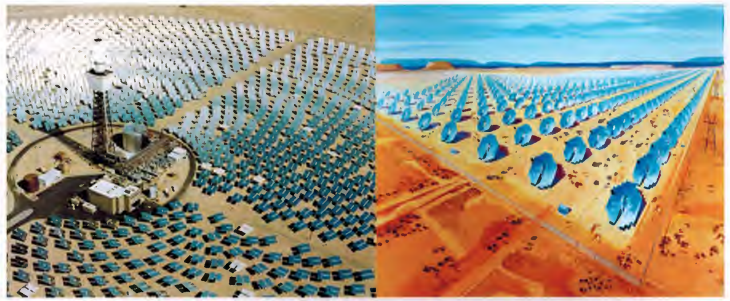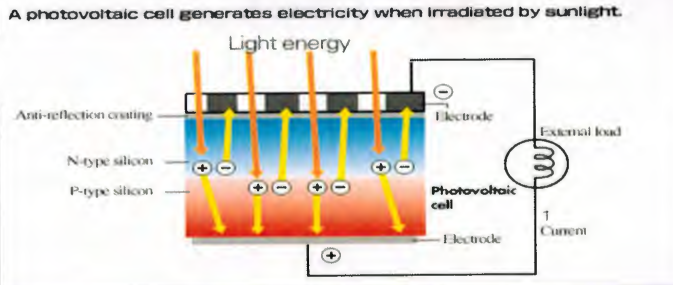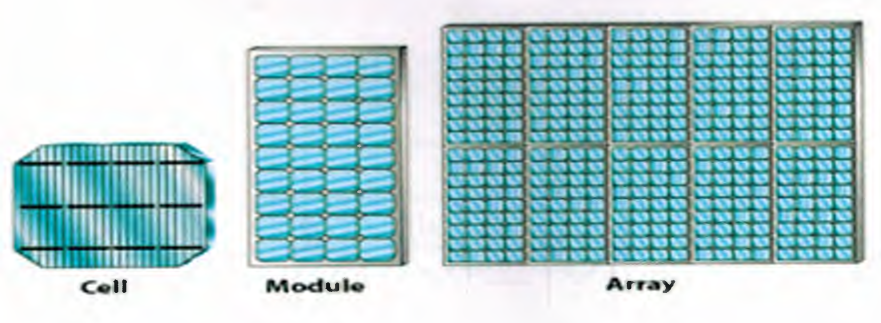At the present time, solar energy can be harnessed in many ways, including using it for water heating, solar heating and cooling of buildings, crop and vegetable drying, and greenhouse agriculture. The solar radiation can be captured and converted into useful forms of energy, such as heat and electricity, this thesis focus on using solar energy to generate electricity. There are two ways to generate electricity from the sun which are:
Solar Thermal Electricity Generation

Photovoltaic PV (Solar cell)
Photovoltaic (PY) or Solar cell is a Semiconductor material that converts sunlight to electricity. Common seals are Silicon. The photovoltaic process does not produce any emissions; PV’s have played an important role in our life, such as feeding satellites with needed electricity and they have many applications. The simplest solar cells provide small amounts of power for watches and calculators. More complex systems can provide electricity to houses and electric grids. Usually though, solar cells provide low power to remote, unattended devices such as buoys, weather and communication satellites, and equipment aboard spacecraft.
How to produce electricity by photovoltaic cell?
Photovoltaic cell made from at least two layers of the semiconductor material which is usually silicon. A positive layer which is called p-type, the other layer negative which is called n-type, and between them an area that is called p-n junction . When light enters the cell, some of the photons from the light are absorbed by the semiconductor atoms, freeing electrons from the cell’s negative layer (n-type) to flow through an external circuit and back into the positive layer (p-type) this flow of electrons produces current. Typically, a PV cell generates a voltage around (0.5) to (0.8) voltsdepending on the semiconductor and the built-up technology, these cells are connected with each other in a sealed so-called module. When two modules are connected with each other in series the voltage will be doubled, while the current remains constant, but when two modules are connected in parallel the current will be doubled and the voltage ·., remains constant. For the current and the voltage that be required many numbers of modules are connected to each other in a series and parallel form which is called an array. The following figures shows photovoltaic cell, module, and array.

Solar thermal energy can be collected at large scale and complex collectors are generally used in solar generator where solar heat is used to generate electricity by heating water to produce steam which drives a turbine connected to an electrical generator. Light from the sun may be collected using huge mirror arrays focused onto a receiver at the top of a tower. Most commercially attractive is the solar thermal electricity generation system developed by Luz, which uses parabolic reflectors to warm heat-transfer oil running through a pipe at the focus of the reflector. This heated oil is used to raise steam to power a turbine. When you need a emergency electricity solution or you are outdoor, you’d better choose the kind of portable solar generator, which are provide by ATO solar generator.

